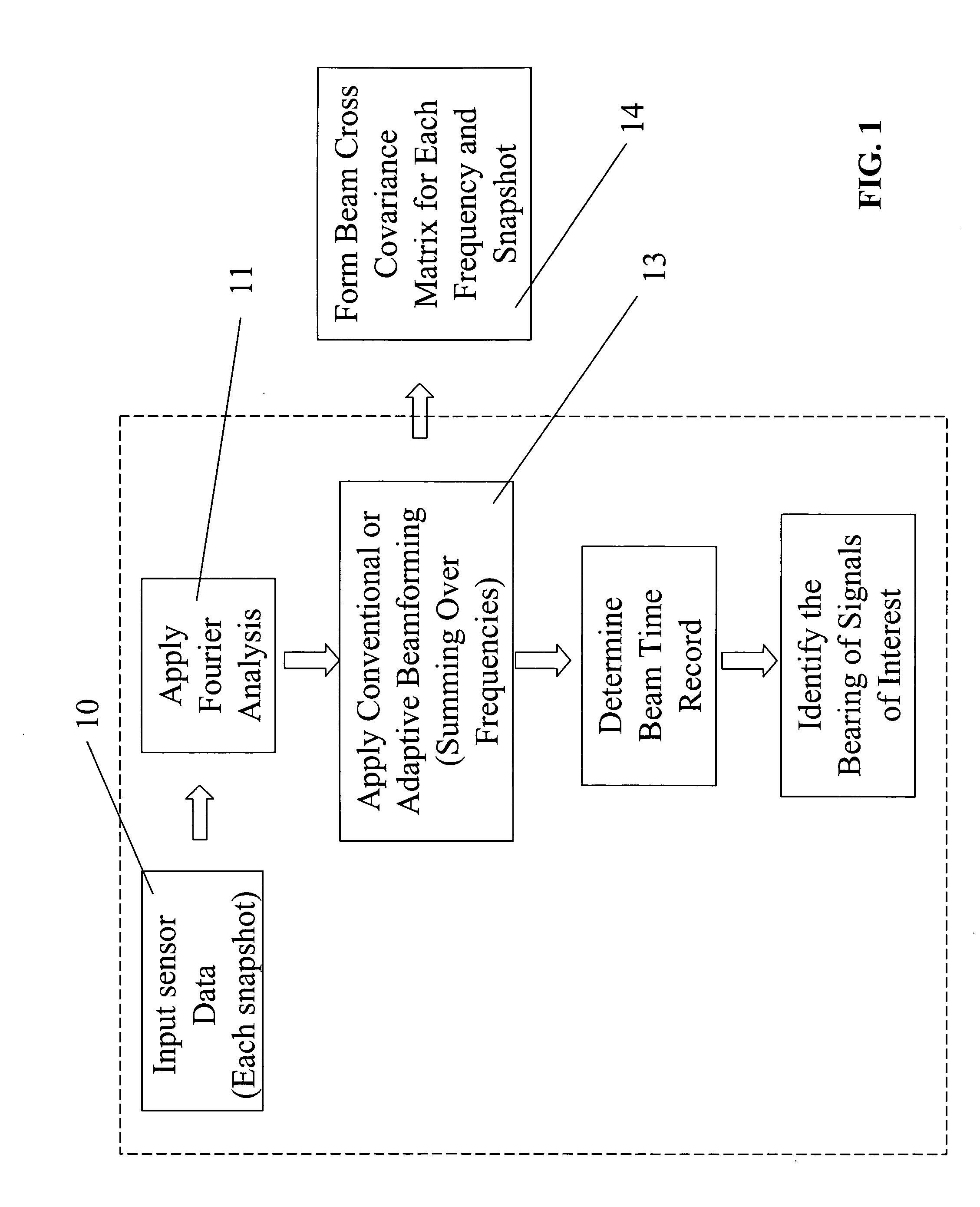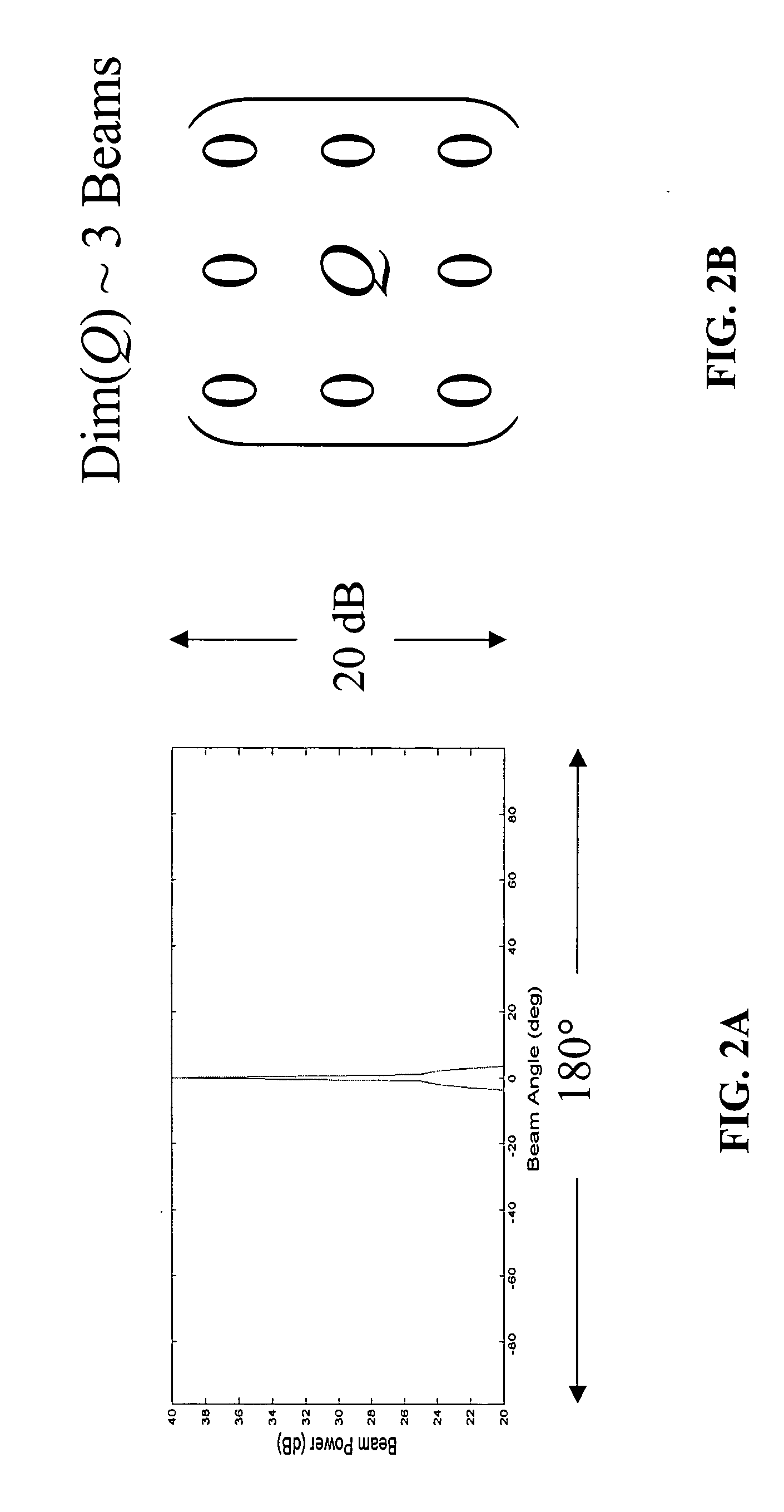Method and apparatus for acoustic source tracking using a horizontal line array
a technology of acoustic source and a horizontal line array, which is applied in direction/deviation determination systems, instruments, systems with undesired wave elimination, etc., can solve the problems of reducing the detection accuracy of acoustic signals, severely degrading the performance, and not being able to assume the good assumption of underwater acoustic signals, so as to achieve the effect of greatly reducing the inability to remove interference signals
- Summary
- Abstract
- Description
- Claims
- Application Information
AI Technical Summary
Benefits of technology
Problems solved by technology
Method used
Image
Examples
Embodiment Construction
[0045] For motion compensation and / or environment-independent source tracking, an embodiment of the instant invention, for example, processes broadband signals in the beam domain. When the signal and interference field occupy different beams, the motion will spread the beam covariance eigenvalue spectrum from one to two (or even three) eigenvalues, but the eigenvalues and eigenvectors of the signal and interference remain in two separate beam sub-spaces centered on the signal and interference bearings. For a source changing bearing, motion effect can be compensated by integrating over the signal beam covariance matrix (i.e., the beam covariance sub-matrix in the signal space) that synchronizes with the source bearing-rate. For a source changing range, elements of the signal beam covariance matrix have the same range and frequency dependence as predicted by the wave-guide invariant theory. The source range-change can be compensated by, for example, frequency-change (i.e., shift). Usi...
PUM
 Login to View More
Login to View More Abstract
Description
Claims
Application Information
 Login to View More
Login to View More - R&D
- Intellectual Property
- Life Sciences
- Materials
- Tech Scout
- Unparalleled Data Quality
- Higher Quality Content
- 60% Fewer Hallucinations
Browse by: Latest US Patents, China's latest patents, Technical Efficacy Thesaurus, Application Domain, Technology Topic, Popular Technical Reports.
© 2025 PatSnap. All rights reserved.Legal|Privacy policy|Modern Slavery Act Transparency Statement|Sitemap|About US| Contact US: help@patsnap.com



